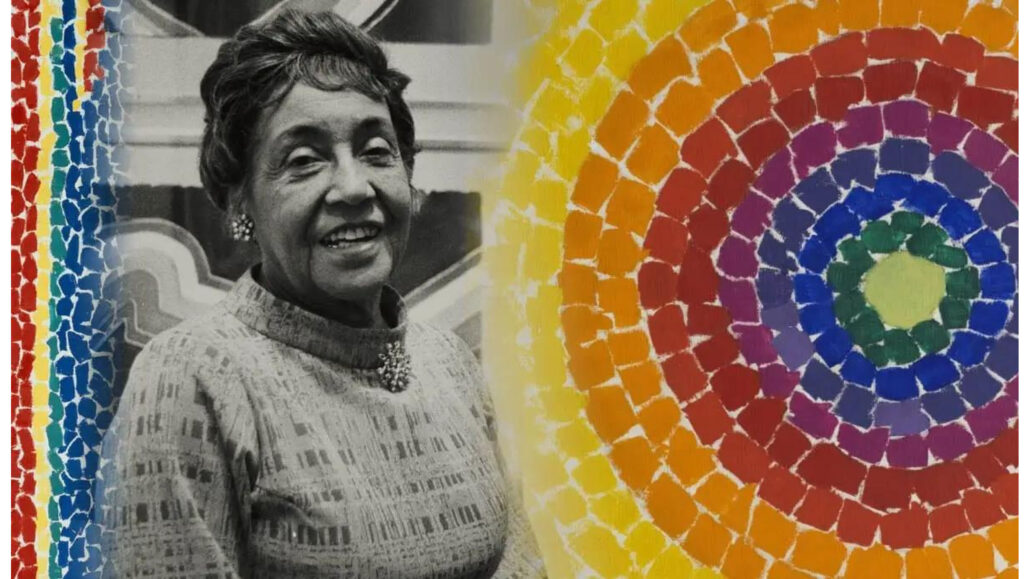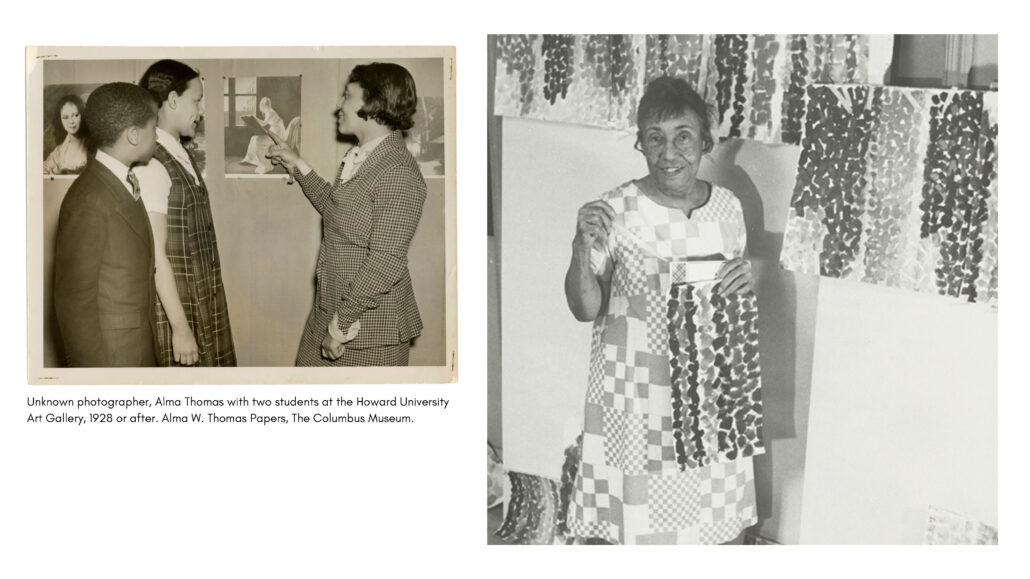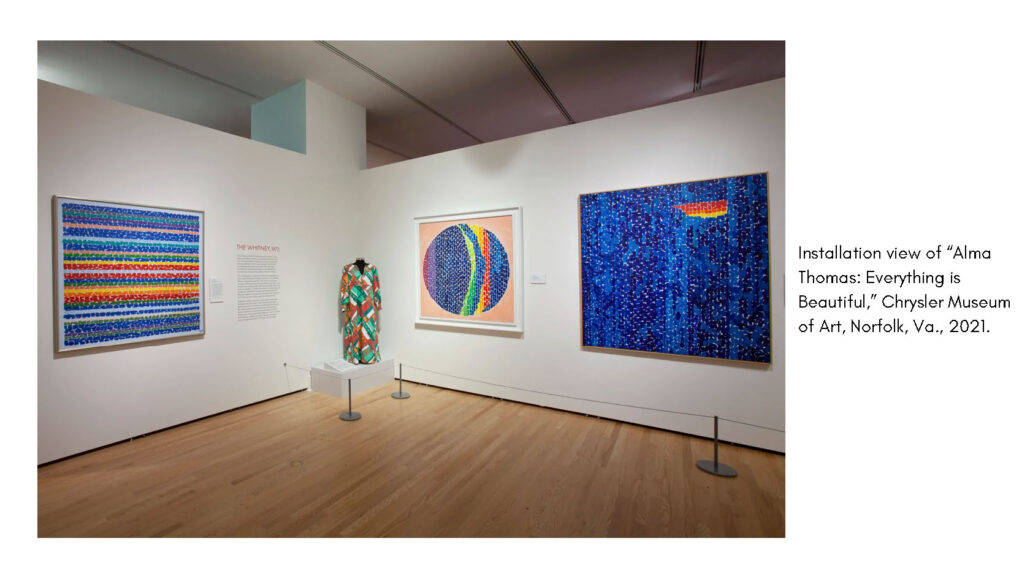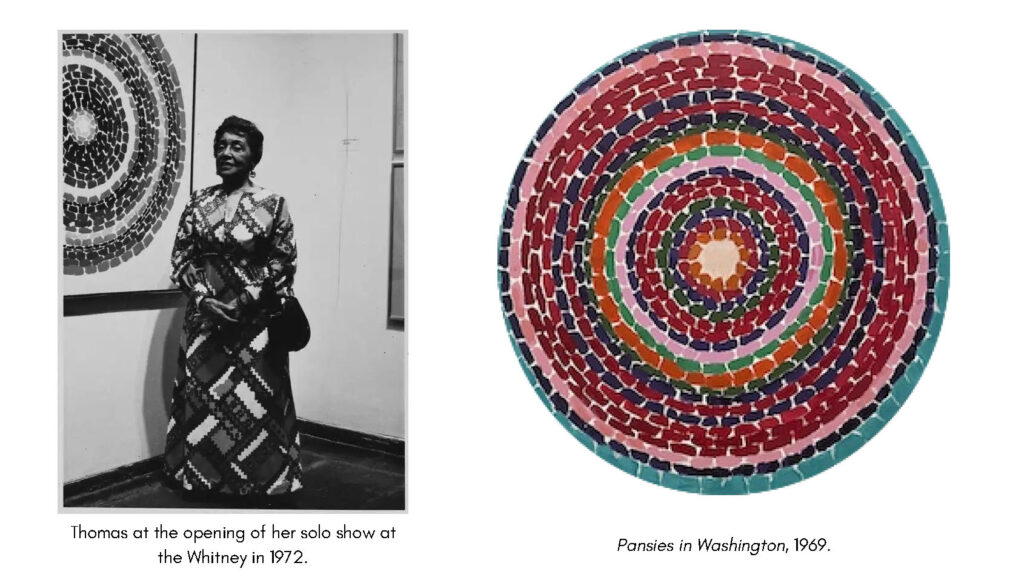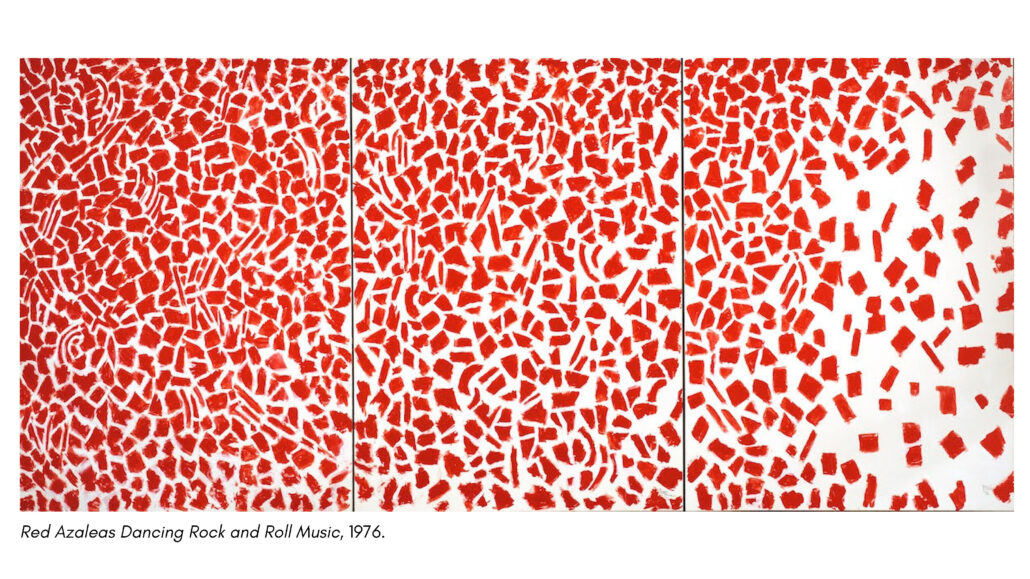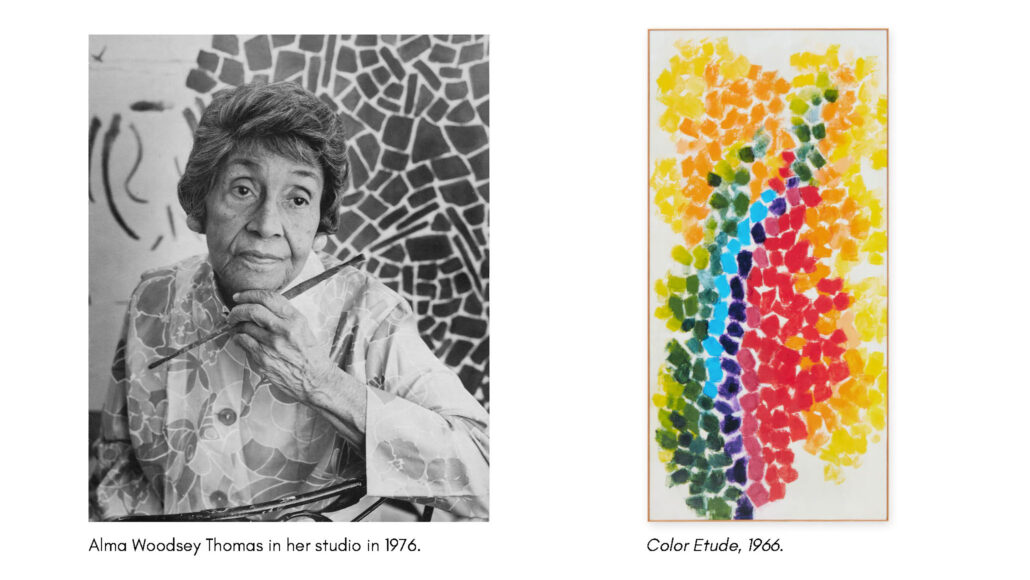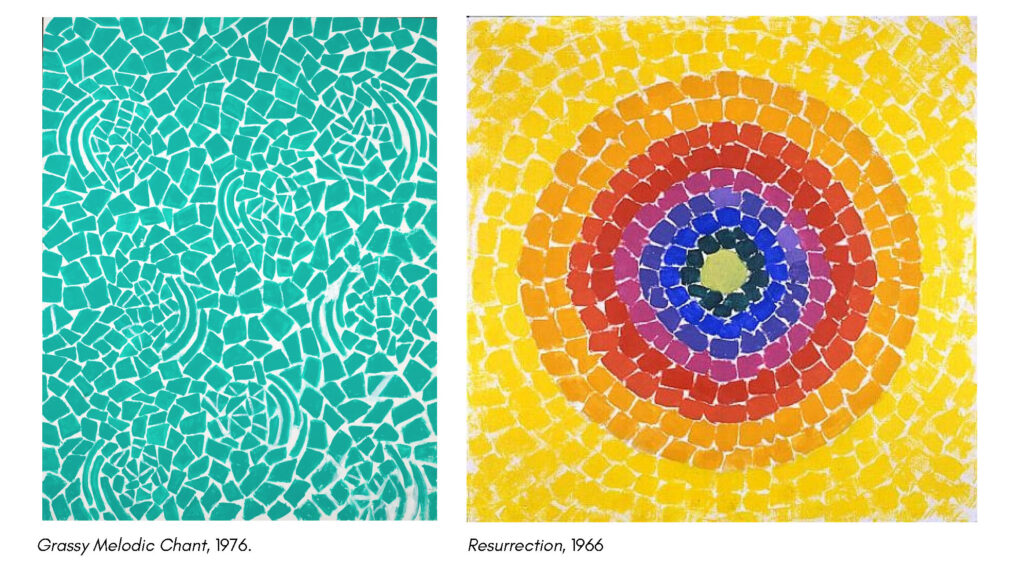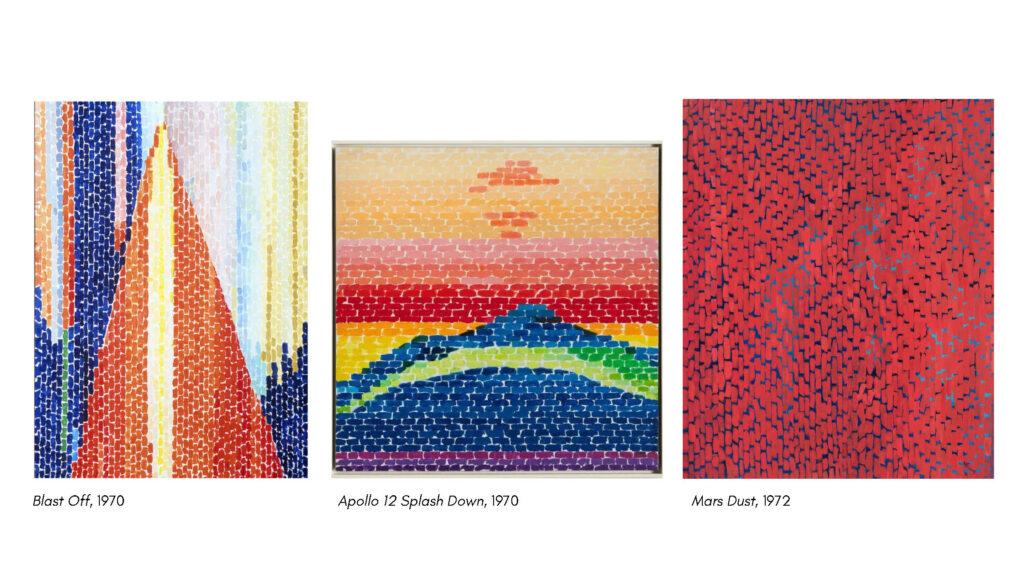Follow-Up to WATERmeditation
with Katie Lacz
“Transforming Energy and Recognizing Rhythm: Meditating with the Artwork of Alma Woodsey Thomas”
Monday, February 12, 2024, 7:30 PM ET
WATER thanks Katie Lacz for leading us through the art of Alma Woodsey Thomas and into our own contemplation.
Katie, who is the Program Director for the Women’s Ordination Conference, introduced the life and art work of Alma Woodsey Thomas, the first African American woman to have a solo show at the Whitney Museum in New York City. She invited us to ask, “How do we transform energy with our own limbs and our own spirits?”
The video can be found at https://www.youtube.com/watch?v=8lwST5ZC3hY.
Katie was so kind as to share her notes as well as the slides that she used to describe Alma Woodsey Thomas:
“A few years ago, we at the Women’s Ordination Conference held a virtual retreat for Pentecost, called “She Went Up in a Flame.” The title referenced a passage from the noncanonical book of the Acts of Philip in which Mary Magdalene is protected by fire—literally “goes up in a flame”— when she is attacked by townspeople for preaching and traveling with men who were not her relatives. During the retreat, we explored the Pentecost story and what it means for women to act as “prophetic flames,” bearing the Spirit’s fire of justice to a world and a Church sorely in need of it. And we paired this with the work of the artist Alma Woodsey Thomas, whose abstract art provided sparks of inspiration, and an invitation to move with freedom into our own artistic practice as prayer.
Before the retreat, I had not been familiar with Alma Woodsey Thomas. If you’re lucky you already know her, but maybe you aren’t familiar with her, either. So I’ll share a little bit of information about her life and her work to situate us for this time of meditation. She was born in Columbus, Georgia in 1891, but when she was 16, her family moved to Washington, DC, seeking relief from the racial violence in the South.
As a girl, Thomas dreamed of being an architect, but there were few opportunities for women architects at the time. She was also always inspired by the patterns and colors she noticed in the natural world around her. So she attended Howard University, becoming its first fine arts graduate in 1924. After she graduated, she began a four-decade career teaching art at DC public schools, where she was devoted to her students. Teaching allowed her to support herself while pursuing her own painting part-time.
After she retired, she almost gave up painting because she had developed arthritis. But Howard University wanted to do a retrospective of her work, and she was determined to create new paintings for the exhibition, and developed the abstract style of dashes of bright color, almost mosaic-like, for which she became famous.
Her first retrospective exhibition, at Howard University in 1966, was when she was 75 years old. She continued to gain fame for her vibrant work, and in 1972 became the first Black woman to have a solo exhibition at the Whitney Museum of American Art. She was 81 years old.
Her arthritis limited her ability to make her paintings as large as she wanted, but in 1976 she painted a 13-foot-long abstract mural titled “Red Azaleas Singing and Dancing Rock and Roll Music.” Writer Alex Greenberger describes it this way: “this painting is composed of three canvases, each of them lined with red-orange forms. The colored shapes are arranged into jagged, arcing patterns, causing them to appear to move before one’s eyes.”
When she debuted the painting at a show in 1976, she said, “Do you see that painting?…Look at it move. That’s energy and I’m the one who put it there. I transform energy with these old limbs of mine.”
What immediately struck me when I was first introduced to Alma Woodsey Thomas’s paintings was their vibrancy of color, and the sensation of movement and rhythm coming through so strongly in paint on canvas. We ended up buying a print of one of her paintings and putting it on our kitchen wall, and it provides me with a moment of joy when I see it in the midst of our chaotic, messy life with young kids. She transforms my energy.
What strikes me when I spend time with her work, too, is that the movement, vibrancy, and energy don’t just come from the bright colors – it comes from the white space in between, providing a sense of rhythm and clarity, the equivalent of the beats between notes of music. The color would not come through in the same way without the white space to breathe and move in.
Alma Woodsey Thomas was no stranger to hardship and ugliness – she lived through world wars, genocide, the Great Depression, Jim Crow; and the racism she faced simply by virtue of existing as a Black woman in the early and mid-twentieth century. But she kept herself attuned to beauty, which she found both in nature and in her awe of the increasing knowledge of outer space gained in the mid-twentieth century. Her limbs transformed the energy of her world into these dynamic, lively testaments to beauty.
I imagine I might not be alone in admitting that I am finding it hard to stay attuned to beauty in this moment in the world. The ugliness, violence, and atrocities of the world feel very, very present and pervasive. My soul, and even sometimes my limbs, feel heavy with the weight of it. But I wonder what Alma has to teach us. I wonder where the Spirit is inviting me, and is inviting you, to transform energy with our limbs, whether they are young or old or in between. How do we transform energy that is destructive or chaotic into that rhythm of brightness and color – literally or figuratively? Can we trust that the Spirit that hovered over chaos and breathed it into creation moves through the rhythms of our souls, our limbs, with the same energy to transform?
So my invitation to you is to sit with this Spirit who energizes our limbs and our souls, to breathe with the One who has given us the rhythm of our breath. Allow yourself to be open to where you might be called to transform energy around you or be transformed by the energizing Spirit.”
Marie Hogarty kindly send the following reference to Alma Woodsey Thomas at the Smithsonian Museum of American Art in Washington, https://americanart.si.edu/artist/alma-thomas-4778.
Participants expressed deep gratitude for the content of the meditation. Some said it helped them get in touch with their transforming energy. Several were amazed at Alma Woodsey Thomas as a major figure about whom most of us know so little. Once introduced, we are anxious to learn more.
Still others remarked about the style of her painting, especially the white spaces in between the bright spots of color, and the energy in each work. One person drew a parallel to music in which the silence can be as shaping as the notes.
Personal reflections about energy were poignant. So, too, were reflections on the creeping presence of arthritis that made the author’s every brush stroke all the more precious.
The WATERmeditation was a lovely and informative opportunity to look deeply and with appreciation at one woman’s work and all that she did to transform the world’s energy. Thanks, Katie and Alma Woodsey Thomas.

